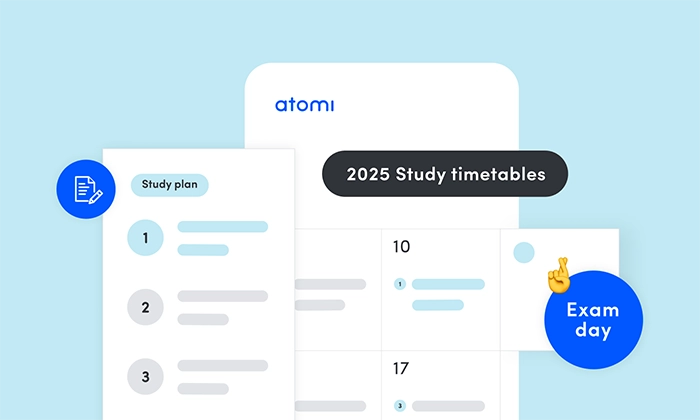How to take Cornell notes

Are you looking for a way to take better notes and improve your understanding of course materials? Look no further than Cornell notes!
In this blog, we’ll break down this note-taking method and share why it’s a simple and flexible study tool! You can use this method in class when you are learning something new, or you can use it when taking notes on your own.
Let’s get into it.
The layout
Divide the paper
First, divide your note paper into three sections: a narrow left-hand column, a wider right-hand column, and a bottom section. The general notes are taken in the right-hand column, the cues that relate to that note are taken in the left-hand column and at the bottom of the page there will be a section for a summary. Check out our video on how to take Cornell notes on YouTube.
Note-taking
This right-hand column is where you’re going to start. As you hear, read, or watch the information you are learning, you just take notes in this column. Take notes as you usually would by summarising the key points and important information and use abbreviations and bullet points if need be.
Cue column
This all seems pretty similar to regular note-taking, but here’s the important part. Now we want a cue on the left that relates to the information we have just written down. A cue can just be a question, keyword or phrase that refers to the material on the right-hand side. In some cases, the lesson might move on before you have time to write cues. That’s fine, you can just come back and write the cues when there is a pause.
Summarise
At the bottom of the page, write a summary of the primary points covered in your notes. This helps to reinforce your understanding of the material and provides a quick review. Try and wait at least a couple of hours before doing the summary. That will give the content time to sink in, and let your brain sort things out in the background.
What is so good about Cornell notes?
So that’s the basic structure. But why should we bother?
Firstly, Cornell notes help us to break things down into more manageable chunks of information. Otherwise, notes can easily become a series of big paragraphs and we’re likely to lose track of how the information relates.
Cornell notes help make sure that each cue and response is a clearly defined piece of information.. It forces us to think of a topic as a set of smaller chunks, which are way easier to remember than a beefy paragraph or lots of nested dot points.
Cornell notes force us to phrase material in a ‘cue and response’ format. This is good for three main reasons:
- It’s proven way for our brain to remember things. It’s like how looking at a photo you took on holiday can help you to remember the whole day even though that information is not presented in the photo. The photo is the cue, which reminds us to think of all the information related to it.
- It's essentially how we see material in an assessment. A physics exam doesn’t normally start with the question “write down everything you have learnt about transverse waves”. We get questions testing a smaller chunk of information such as “What is the name of the highest point on a transverse wave?” This is the kind of chunk that we are already going to have clearly laid out in our Cornell notes.
- The cue and response structure is great for revising and testing yourself on the material. All you need to do is cover up the right-hand column so you can’t see it, and test your ability to respond to the cues on the left. You can see where you are strong, where you are weak, and testing yourself will strengthen your memories much more than just re-reading or highlighting.
So there you go, you have now added Cornell notes to your study toolkit, nothing can stop you now! See you next time 👋
References
Subscribe to our newsletter
Get the latest teaching and learning insights delivered to your inbox.
You can unsubscribe at any time, no hard feelings.
Subscribe to our newsletter
Get the latest teaching and learning insights delivered to your inbox.
You can unsubscribe at any time, no hard feelings.
What's Atomi?
Easy to understand, super engaging, and matching what you’re learning in class. Available for 100s of subjects across your high school years.
With heaps of questions and smart AI feedback that shows you what you’ve nailed and what to work on—so you won’t just feel ready, you’ll be ready.
Improve your study game, get AI-driven tips tailored to you, keep tabs on your progress and unlock insights so you can always hit your goals.
What's Atomi?
Captivating and impactful video-first content, fit for all types of learners and grounded in the absolute must-have info of the high school curriculum.
Active recall quizzes, topic tests and exam practice enable students to get immediate feedback and build skills, while allowing teachers to differentiate instruction.
Create engaging learning experiences with easy-to-use tasks, get actionable insights to differentiate instruction and experience intelligent personalisation for your students.
What's Atomi?
Short, curriculum-specific videos and interactive content that’s easy to understand and backed by the latest research.
Active recall quizzes and practice sessions enable students to build their skills, put knowledge into practice and get feedback.
Our AI understands each student's progress and makes intelligent recommendations based on their strengths and weaknesses.




